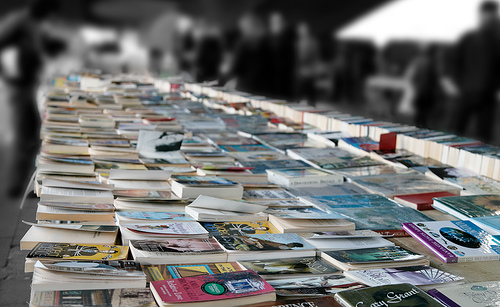 Tuesday’s lecture in the Leiden City of Books series hosted by Studium Generale was delivered by Harm
Tuesday’s lecture in the Leiden City of Books series hosted by Studium Generale was delivered by Harm
Beukers, Scaliger professor Special Collections in Leiden. The topic of his lecture was 17th century medics
and their libraries. He focused especially on the Leiden professor Fransiscus Sylvius (1614-1672). One of
Sylvius most important publications was the “Praxeos medicae idea nova, 1671″ (New idea in medical practice).
Beukers wonders were Sylvius’ new ideas originated from. One way to find out is by taking a look at what it
was that Sylvius exactly read. Beukers did some research on what was present in Sylvius’ library and how this differed from other medics’ libraries of that age in order to find an explanation for the originality of Sylvius’ ideas.
What were these ‘new ideas’ exactly? First of all, Sylvius was the founder of the 17th-century iatrochemical school of medicine, which held that all phenomena of life and disease are based on chemical action. The idea that all bodily phenomena can be traced to chemical processes was quite new. Another of Sylvius’ innovations lies in his emphasis on the importance of the practical teaching of medicine, for which he established the Collegium Medico Practicum. For Sylvius the three pillars of medicine were animal experiments, patient observations and autopsy.
One of the resources Beukers used to track down information about Sylvius’ book collection was the inventory of his belongings, made up after his death. Beukers emphasizes correctly that this isn’t the most reliable source, for many times the auctioneers tried to throw in some unsold books of their own, to ensure their sale together with a ‘famous library’. But if we do take a look at the list, we can see that Sylvius’ library had almost no literature, a lot of (medical) classics (from Hippocrates to Galenus) ánd also a lot of books on alchemy, which could explain something about the nature of the ‘chemical influences’ in his work. He also had numerous works from his friend Descartes, who, like Sylvius, loved to ‘distil the spirits’.
A comparison with the libraries of other physicians of that time, like the one belonging to Lucas Schacht (1634-1689), shows the uniqueness of Sylvius’ library when it comes to its alchemy works. However, Sylvius was not altogether alone in this respect, for the physician Fransiscus Gomarus (1563-1641) also had some works on alchemy in his library.
Beukers’ lecture offered a fascinating journey into the history and origin of ideas and is a very good example of how book history can be very well used to reconstruct the Zeitgeist of a certain period. Next week Prof. Gerard Unger will give a lecture on the history of typography in Leiden. Be there or be square.








 Tuesday’s lecture in the
Tuesday’s lecture in the 